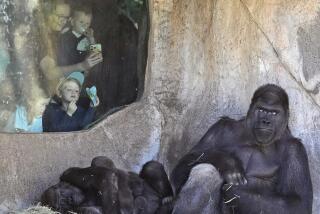A switch to daylight saving time could be lifesaving for koalas, researchers say
The population of wild koalas in the southeast portion of Australiaâs Queensland state has plunged by 80% in less than two decades, but researchers are offering a simple plan to save them. They can sum it up in three words: daylight saving time.
Changing the clocks would help stem the koalapocalypse by reducing fatal encounters between koalas and the motorists who drive through their ever-shrinking territory, the researchers say. According to their calculations, the number of koala deaths could fall by 8% on weekdays and 11% on weekends.
âWe hope that our study will encourage the Queensland government to consider the benefits of implementing DST,â they wrote in a study published Tuesday in the journal Biology Letters.
Queensland, the state in the northeastern corner of Australia, has a complicated relationship with daylight saving time. The practice has not been observed there since 3 a.m. on March 1, 1992, when a three-year trial period came to an end. The push to bring it back has spawned petitions, referendums and even a political party (Daylight Saving for South-East Queensland, or DS4SEQ).
To the study authors, the main benefit of daylight saving time is that it would result in having fewer cars on the road during and after twilight. Thatâs when koalas â nocturnal animals that sleep during the day and are active at night â are most likely to be on the ground near roads, or attempting to cross them.
The researchers examined traffic flow data from the Queensland Department of Transport and Main Roads to gauge when thoroughfares around Brisbane had the most motorists. Weekday traffic was highest between 7 a.m. and 8 a.m., and again between 3 p.m. and about 6 p.m., corresponding with commuting times. On weekends, traffic was heaviest between 11 a.m. and noon, then remained relatively high until about 4 p.m.
But some of these high-traffic periods were deadlier than others. By far, the most wildlife-vehicle collisions occurred during the first few hours of evening darkness. During the darker months, that window began a little after 5 p.m.; during the lighter months, it started closer to 7 p.m.
The researchers also put satellite tracking collars on 25 koalas to see where they were at various hours of the day. Just as with cars, they found that koala activity peaked in the âlate afternoon/early evening period,â according to the study.
The clear implication is that âpolicies to reduce this overlap might reduce collision rates,â the researchers wrote.
On weekdays, giving drivers an extra hour of daylight for their evening commute would reduce the number of âkoala strikesâ by 8.1% to 8.6%, depending on the road. On weekends, the later twilight would mean 10.5% to 11.3% fewer collisions, the team determined. (The researchers think the benefit would be smaller on weekdays because some of the gains in the evening would be offset a bit by darkness during the morning commute.)
The findings donât necessarily apply to other parts of Australia, where traffic patterns may be different than in Brisbane and where adoption of daylight saving time would mean different amounts of evening daylight. The researchers also noted that koalas might be affected differently than other wildlife species that are vulnerable to traffic.
Still, policymakers ought to at least consider koalas and other wildlife when contemplating a return to daylight saving time, they wrote.
Follow me on Twitter @LATkarenkaplan and âlikeâ Los Angeles Times Science & Health on Facebook.
MORE IN SCIENCE
What scientists learned about whale sharks from the DNA they left behind in seawater
Ants have been farming plants for millions of years, long before people
Scientists aim to feed the world by boosting photosynthesis







